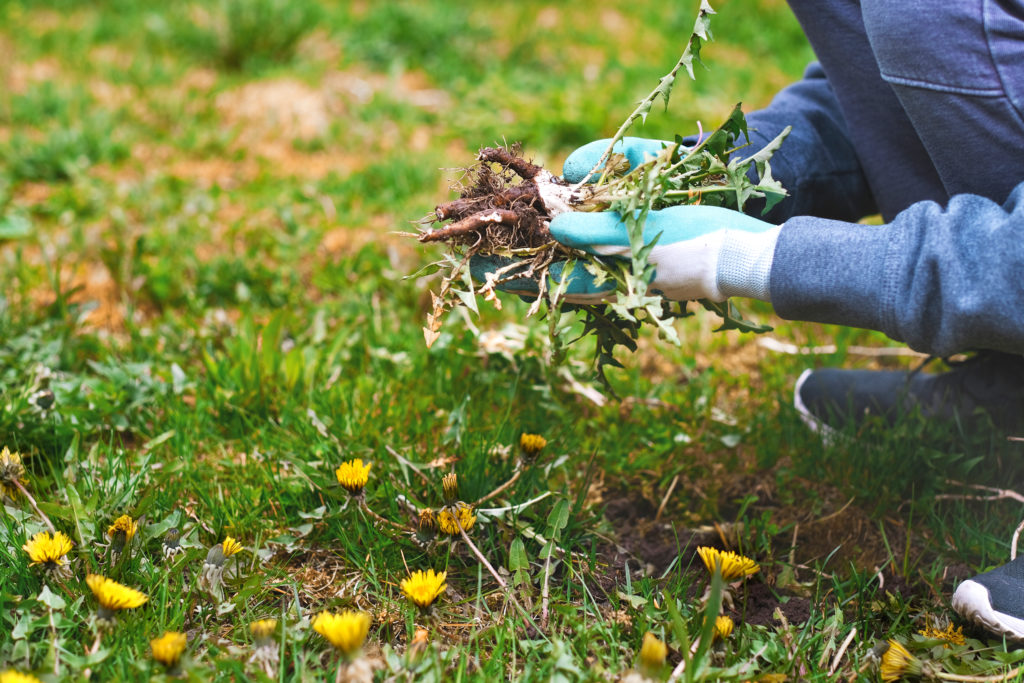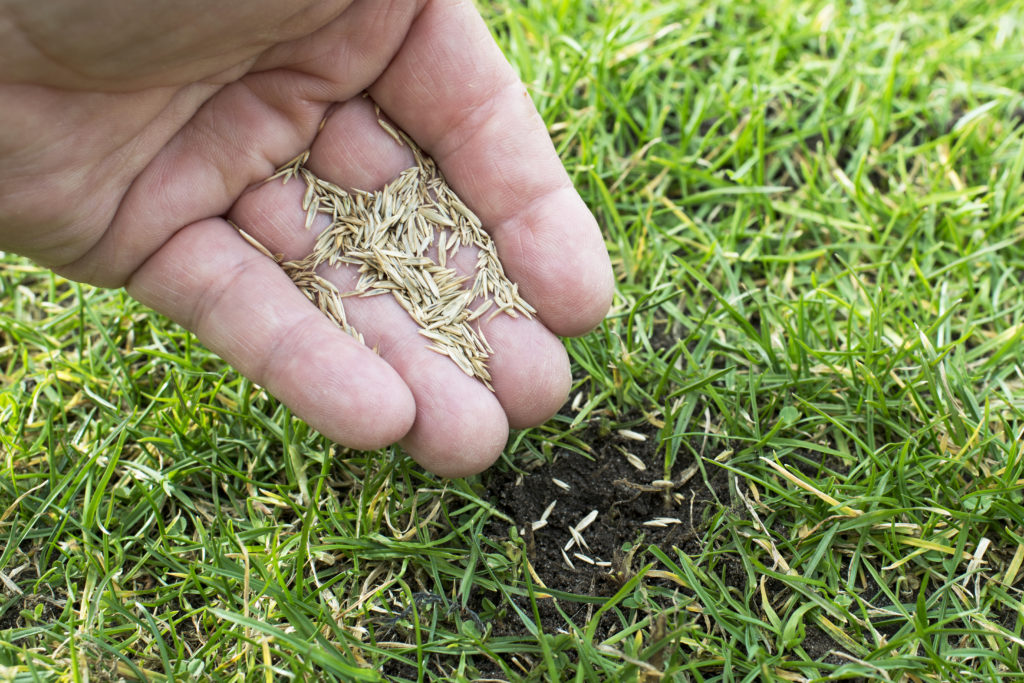How to make grass green? You’d imagine it to be a question of just letting it grow. After all, it’s frustrating to watch grass pop up as a weed in your flower beds, as bright and as vibrant as you like. Yet, your lawn is dull, peppered with dead patches and distinctly NOT green.
So, how do you make grass green without resorting to reseeding the whole lawn or hiring an expensive company to fix your problem?
By the end of this article you’ll have crushed the blues and discovered how to keep your grass green throughout the seasons. Follow along as you understand why grass is green and the health benefits associated with it; how to turn brown lawn green, and how to keep your backyard verdant throughout the year.
Why Your Backyard Needs Green Grass
Why is grass green? Without getting into too much chemistry, chlorophyll is a color pigment in plants (and grass) which helps them exchange energy from sunlight into food. This in turn allows the plant to absorb carbon dioxide in the atmosphere and to breathe out oxygen.
In the great circle of life, oxygen is our lifeblood, and by breathing out carbon dioxide, we are helping support plantlife. But, this isn’t the only reason the environment needs green grass.
A good lawn will help insulate your backyard from noise, softening the harsh clamor of everyday life. Not only does grass help lessen noise, it can relieve high summer temperatures, absorbing heat from your home, keeping you cool.
And, the benefits of walking on grass are considerable! Did you know you can reduce inflammation in the body, improve sleep patterns, and boost your mental health all by taking a walk on the green stuff? What’s not to love about releasing the day’s stress with a walk in fresh air on a soft, lush lawn?

How To Make Grass Green
There’s no doubt if you have a system of lawn management, you’ll ensure your grass stays green all year round. So without further ado, here is Cresco’s tried & tested, simple 7-step lush lawn strategy.
1. Understand Your Soil for Greener Grass
Let’s start at the beginning and get to grips with your soil. Because knowing what soil your lawn is growing in will help determine how to make grass green.
What kind of soil is it? Is it free draining, sandy loam? Or does it become waterlogged quickly when it rains?
Free draining sandy soil is great for getting water to the roots without build-up, but dries out quickly in hot weather. On the opposite end of the spectrum, clay soils, where grass becomes waterlogged when it rains too much, contain the water above ground much like a jug holds water on your kitchen table.
Ideally, you want a combination of the two soils, so your grass will get good aeration and sufficient water to the roots. However, if your soil isn’t perfect, don’t worry. We’ve got tips to help resolve the issues and make grass green.

2. Water Occasionally, But Thoroughly
In order to encourage grass to grow strong, healthy roots, they need to seek out water. By pushing down into the soil, the roots will spread out and down in their search for moisture. If they are pampered and served up water often, they will have no need to hunt for it.
The roots will grow weedy and short. The grass will become limp and pale. And worse still, is easily pulled out when mowing or with a little foot traffic across it. The grass simply is not able to withstand the amount of use, and will die.
However, your grass will benefit from watering for longer periods of time – occasionally. And only if it truly needs a water. Allow the water to thoroughly soak into the lawn and seep past the roots. Force your grass to become strong, and resist the temptation to continually water. Your patience will be rewarded with strong, healthy green grass.

3. Keep Your Lawn Weed-Free
Broadleaf weeds such as dandelion, chickweed and thistle, along with crabgrass, are death to your lawn. However, they are different kinds of weed and require different removal strategies.
Essentially, broadleaf weeds are best pulled out by hand, or sprayed individually with a pesticide. In contrast, crabgrass can be dealt with before it emerges from the soil. By using a pre-emergent weed killer, you will be able to strike a blow to the roots of the weed itself.
Pre-emergent weed killer slays the roots and stops the plant being able to germinate. For more in-depth suggestions on how to tackle weeds in grass, take a look at this article on how to get rid of weeds in lawn.

4. Reseed or Patch Bald Spots
Where those pesky weeds have been removed, you’re likely to have bald spots. Indeed, wherever there’s an area with no grass, you’ll swiftly find it colonized by weeds. In short, stop weeds in their tracks by reseeding, or patching with good quality grass seed as soon as possible.
Whilst it is feasible to reseed or patch in summer, you will have to be on guard. Keep the seed watered, so it germinates quickly. This is one of those times when you will have to water. Otherwise, your efforts will fail. Spring or fall reseeding is best, due to milder temperatures and more moisture in the air encouraging germination.
Check out this article for how to overseed a lawn for lush grass all year with a guide and tips for picture-perfect lawn.

5. How To Make Grass Greener with Fertilizer
Use a good fertilizer with the right balance of nutrients to support growth in your lawn. A fertilizer with a decent amount of nitrogen will help create chlorophyll, the pigment that makes grass green!
However, you do want to make sure the other essential elements are included – phosphorus and potassium – as the blend of the three nutrients helps the plant build strong roots, as well as all that green goodness.
For more advice on fertilizers, take a look at Cresco’s article on the best time to fertilize lawn.

6. Mow Routinely
Before grass gets into the growing season in early spring, it’s time to give your mower the once-over. Your lawn will benefit from a sharp blade on your mower, so make sure that it’s in tip-top condition to help keep your grass green. Dull blades are the death of a beautiful lawn.
With your mower ready to take on the season, you’ll want to get into a routine of cutting the grass regularly. During late spring and summer when growth is at it’s peak, you’ll be mowing every five to seven days. This will slow down, of course, as fall arrives and the grass slows it’s growth.
Clear debris off the lawn first and don’t cut the grass too short, too quickly. Mow no more than 20% of the length, as the grass becomes stressed if too short.

7. Stripe Your Lawn for Big League Looks
Making your lawn look bigger and greener is easier than you might think. If you mow in the same way as the big league baseball fields – by walking across the grass in one direction, then returning in the opposite direction – you create the effect of space and light.
The light reflects off the grass blades which have been bent in opposite directions, and appear darker on the blades bent towards you.
Find out everything you need to know with this article about lawn striping and how to stripe a lawn with a push mower.

Your Action Plan for How to Make Grass Green
How to make grass green is an age-old problem. There are so many variables to consider when trying to fix the issue. But, by taking the 7-step lush lawn strategy above, you will be well on your way to a beautiful lawn. With care and attention your grass will flourish, rewarding you with an abundance of pleasure all season long.


